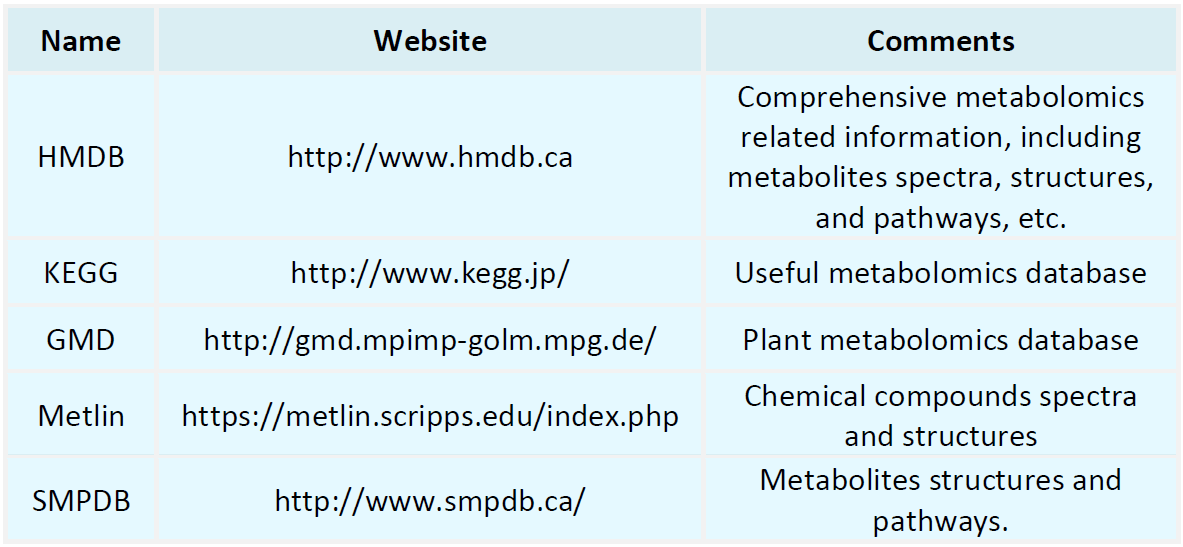Resources
Proteomics Databases

Metabolomics Databases

-
Protein seq refers to the specific arrangement of amino acids in a protein within living organisms. Proteins are essential molecules that carry out nearly all cellular functions, including catalyzing biochemical reactions, providing structural support, regulating cellular processes, and participating in signal transduction. Proteins are large biomolecules composed of 20 standard amino acids, linked by peptide bonds. The sequence of these amino acids defines the protein seq, which is crucial for unders......
-
• C-Terminal Protein Sequencing
The primary goal of C-terminal protein sequencing is to determine the amino acid composition and sequence at the carboxyl terminus of a protein. Proteins are macromolecules consisting of amino acids covalently linked by peptide bonds, and their biological functions and physicochemical properties are largely dictated by their amino acid sequences. Information on the C-terminal sequence is crucial for understanding protein function, post-translational modifications, and degradation pathways. The biologi......
-
Shotgun LC-MS/MS is a powerful proteomics technique, named after the "shotgun" analogy to emphasize its ability to conduct comprehensive and unbiased protein analysis in complex biological samples. This method plays a crucial role in proteomics research, allowing researchers to systematically characterize the proteome and investigate molecular mechanisms underlying protein functions and biological processes. Beyond fundamental proteomics studies, Shotgun LC-MS/MS is extensively utilized in disease r......
-
• Antibody Repertoire Sequencing
Antibody repertoire sequencing provides a detailed analysis of the diversity and complexity of antibodies within the immune system. By sequencing B cell receptor (BCR) or T cell receptor (TCR) repertoires derived from various individuals or cell lines, this technique elucidates the mechanisms underlying immune recognition of pathogens. Researchers can determine the heavy and light chain sequences of antibodies and analyze these data to characterize the composition and temporal variations of the antibo......
-
The Edman degradation procedure is a widely used method for determining the amino acid sequence of peptides and proteins. Originally developed by Pehr Edman in the 1950s, this technique represented a major breakthrough in protein chemistry. The Edman degradation procedure employs a stepwise chemical process to sequentially cleave and identify N-terminal amino acids, enabling the progressive determination of a polypeptide’s sequence. Historically, this method played a central role in protein sequencing......
-
• Peptide Analysis by Mass Spectrometry
Peptide analysis by mass spectrometry is pivotal in proteomics research, serving as a technique to determine compounds' mass by measuring the mass-to-charge ratio of ions. This method combines mass spectrometry with protein digestion, where proteins are enzymatically broken down into peptides, which are then analyzed to obtain precise mass data. Its applications span basic biological research, clinical diagnostics, drug development, and sectors such as agriculture and environmental science. In basic......
-
• Peptide Identification by Mass Spectrometry
Peptide Identification by Mass Spectrometry is a cornerstone technique in proteomics research, enabling the identification and quantification of protein peptides. Its primary applications include unraveling protein sequences, analyzing protein modifications, and studying protein-protein interactions. In proteomics, understanding the structure and function of proteins is paramount, and mass spectrometry provides a precise, rapid, and high-throughput approach to achieve this. Mass spectrometers ionize p......
-
• 4D Proteomics for Advanced Protein Analysis
4D proteomics analysis enhances traditional 3D proteomics-which considers retention time, mass-to-charge ratio, and ion intensity-by adding ion mobility as a fourth dimension. This advanced technique not only focuses on three-dimensional structural studies but also incorporates a temporal dimension, thus offering more comprehensive and dynamic insights into biological systems. Integrating mass spectrometry, time-resolved techniques, and sophisticated data analysis, 4D proteomics reveals the dynamic ch......
-
• Palmitoylation Mass Spectrometry
Palmitoylation mass spectrometry is a sophisticated analytical technique employed to detect and characterize lipid modifications in proteins, particularly palmitoylation. This modification involves the covalent attachment of palmitoyl groups to specific amino acid side chains via ester or thioester bonds, which is critical for modulating protein function, localization, and stability. Given its dynamic and reversible nature, palmitoylation plays a pivotal role in cellular signaling pathways, protein-pr......
-
2-DE proteomics is a comprehensive analytical technique that investigates the expression, structure, function, interactions, and dynamic changes of proteins within cells, tissues, or organisms. This technique integrates isoelectric focusing (IEF) and SDS-PAGE, enabling the high-resolution separation of proteins based on their isoelectric points and molecular weights. In the first dimension, IEF separates proteins by their isoelectric points (pI) within a pH gradient, concentrating them at their respec......
How to order?







